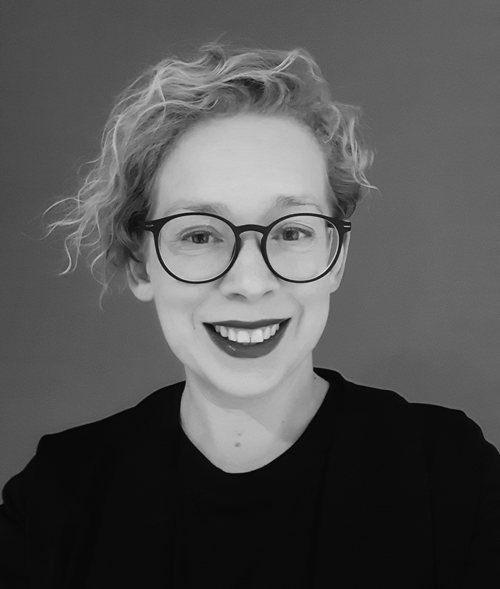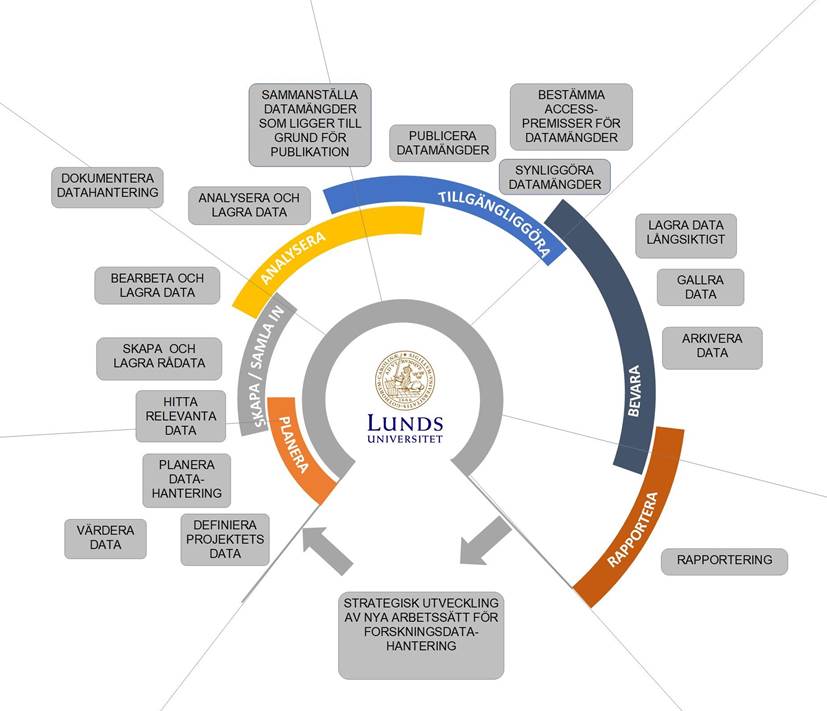On 10 February, SND hosted a webinar on enterprise architecture and research data. The webinar was held by Monica Lassi (Lund University) and Mikael Wettercrantz (Karolinska Institutet), who presented methods and experiences from mapping an overview of their respective enterprises, and on a growing national collaboration.

Monica Lassi has been working with the university board at Lund University since 2017, and has been the university’s coordinator for research data management since 2019.
—This was a broad assignment to get an overall picture of the challenges in managing research data, but also to support the university board in their policy-making processes and to gain a more coherent view of this field. There are many new requirements, conditions, and practices that we need to address in order to be able to support researchers in their work, she says.
One of the projects that Monica Lassi has worked on as a coordinator is to map the university’s research data processes. This mapping includes, apart from an overview, a compliance list (of legislation, requirements, and guidelines, as well as a responsible contact for each area), and a roadmap for the work ahead. The project has been carried out with her colleagues Anna Axmon and Emma-Lisa Hansson, who will continue the work from March, when Monica leaves Lund University for a similar initiative at SNIC.
In mapping the research-related activities at Lund University, the group has used the Milky Way model (Vintergatan), from Cecilia Nordén’s book The Milky Way – Map, Navigate and Accelerate Change. This model maps and visualises “competencies” in an enterprise. Monica states that the model can be used to communicate parts of an – or the entire – organisation, as it helps to create a comprehensive view of the areas that need to be improved and prioritised.
—Many methods for structuring or visualising focus on just one aspect, such as processes, documents, or information flows. In this model with competencies, you cover everything in the organisation and the enterprise. It also includes visions – where are we now, where do we want to go? The model builds on actual maps, which means that we can zoom in on one area, just like we can in a geographical map. Our basic map for Lund University is pedagogical and shows the area of research data as a whole, but you can zoom in to create a map of, for instance, data management planning.

An opportunity to work together across professional boundaries
Since the work began in Lund, the project has grown organically as more and more HEIs show an interest in it. A national collaboration is now taking shape, where enterprise architecture for research data is viewed from several perspectives.
One of the persons who Monica Lassi and the project group in Lund got in touch with first was Mikael Wettercrantz, IT Architect at Karolinska Institutet. As part of the ATI network for IT architects in Swedish HEIs, he is currently working on a reference architecture for IT enterprises in research support. The projects turned out to have several points of contact, and the participants decided to exchange experiences. Since then, they have also included questions concerning the language and nomenclature of research data in the national initiative. Emma-Lisa Hansson and SND’s Lisa Isaksson opened up for a wider collaboration in this area during the SND webinar.
—There are so many good ideas, so much enthusiasm, power, and competence in the HEIs. These initiatives often come from below and we struggle to get the mandate to make a change. But we often hit a wall somewhere, and very few seem to have policies made on a management level. This may be partly because it’s such a complex area, partly because there are many voices and perspectives to prioritise. If we collaborate, we can get different professions to talk to one another and to reach consensus about where we want to go. We can also create an comprehensive overview and find a voice towards the management in these questions, says Monica Lassi.
If you’re curious or want to start working with this, Monica Lassi recommends you to read about the Milky Way method. She says that her project team are willing to share materials and visualisation models, which they are permitted to use and share as long as they are given proper reference. The group has also compiled a description of their approach at Lund University.
—Everyone is welcome to take part in the national work. Our intention is to make it explorative, an approach characterised by openness. You can test and share experiences, even you should fail. And you don’t need any previous knowledge to join, we learn together.
Do you want to know more about this national collaboration, or about experiences from the project? Contact Monica Lassi, monica.lassi@it.uu.se, or Emma-Lisa Hansson, emma-lisa.hansson@lth.lu.se.
You can read more about the event and see slides from the presentations here.
Note that the presentations were held in Swedish.
